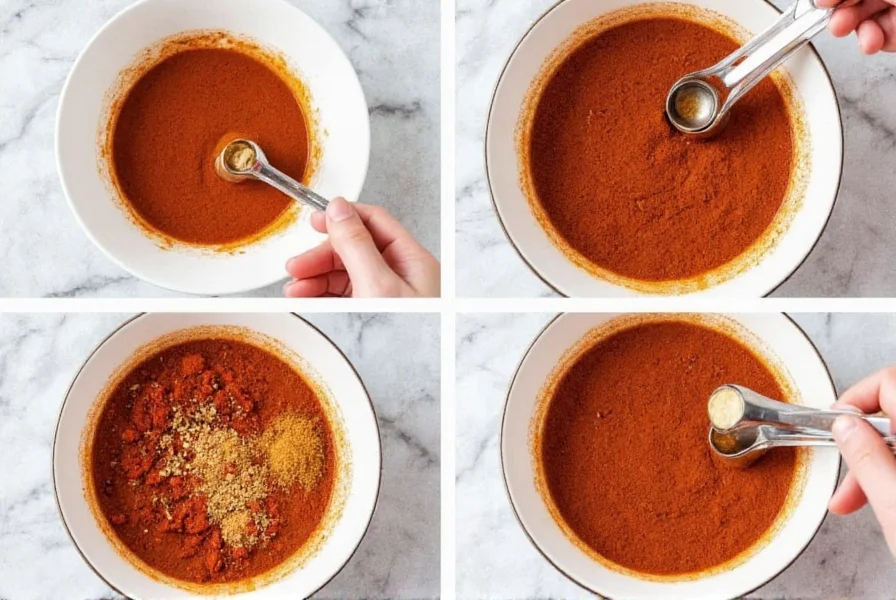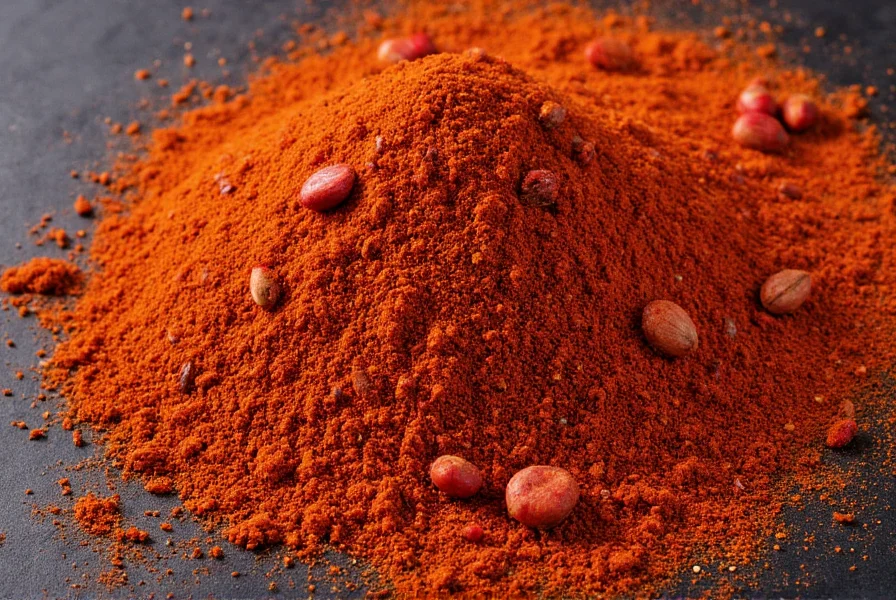A chili spice mix is a blend of dried spices typically including chili powder, cumin, garlic powder, onion powder, and oregano, used to create authentic-tasting chili dishes and other Mexican-inspired recipes. The exact composition varies by region and personal preference, but a standard homemade mix contains 3-7 core ingredients that provide balanced heat, earthiness, and depth of flavor without artificial additives.
Creating your own chili spice mix transforms ordinary meals into restaurant-quality dishes with customizable heat levels and flavor profiles. Unlike store-bought versions that often contain fillers and anti-caking agents, homemade blends deliver fresher, more vibrant flavors while allowing you to control sodium content and spice intensity. This comprehensive guide explores the essential components, regional variations, and versatile applications of chili spice blends that professional chefs and home cooks rely on for authentic results.
Essential Ingredients in Traditional Chili Spice Mix
The foundation of any quality chili spice mix consists of carefully balanced components that create complex flavor rather than just heat. Understanding these core elements helps you customize blends to your taste preferences:
| Ingredient | Flavor Contribution | Typical Proportion |
|---|---|---|
| Ancho chili powder | Smoky, slightly sweet, moderate heat | 30-40% |
| Ground cumin | Earthy, warm, distinctive aroma | 20-25% |
| Garlic powder | Savory depth, umami enhancement | 10-15% |
| Onion powder | Sweetness, aromatic complexity | 10-15% |
| Dried oregano | Herbal notes, earthy finish | 5-10% |
| Cayenne pepper | Adjustable heat level | 0-5% |
Professional chefs emphasize using ancho chili powder as the base rather than generic "chili powder" for superior flavor complexity. Ancho peppers (dried poblanos) provide the characteristic deep red color and nuanced flavor that defines authentic chili spice blends. The cumin-to-chili powder ratio proves most critical—too little cumin creates a one-dimensional blend, while excess cumin overwhelms other flavors.

Regional Variations of Chili Spice Blends
Chili spice mix recipes vary significantly across different culinary traditions, reflecting local ingredients and flavor preferences. Understanding these regional differences helps you select or create blends appropriate for specific dishes:
- Texas-style blend: Focuses on pure chili flavor with minimal additional spices. Typically contains only ancho powder, cumin, and cayenne—no garlic or onion powder. Ideal for meat-forward chili recipes where spice shouldn't overpower the beef.
- New Mexico variation: Incorporates regional chilies like guajillo and pasilla alongside ancho for brighter, fruitier notes. Often includes a touch of cinnamon for complexity without sweetness.
- Colorado adaptation: Features coarser grind and higher cayenne content for pronounced heat. Traditional versions sometimes include a small amount of cocoa powder for depth.
- Homestyle family recipe: Often includes unexpected additions like smoked paprika, coriander, or even a pinch of coffee grounds for complexity.
When exploring authentic regional chili spice mix recipes, pay attention to the grinding technique. Traditional Mexican preparation involves toasting whole spices before grinding, which releases essential oils and creates more complex flavor compounds than pre-ground spices.
Creating Your Perfect Homemade Chili Spice Mix
Follow this professional chef-tested method for creating consistently excellent chili spice mix at home. The recipe yields approximately 1 cup of blend, enough for multiple batches of chili or other dishes:
Basic Homemade Chili Spice Mix Recipe
- ⅓ cup ancho chili powder (not regular chili powder)
- 3 tablespoons ground cumin
- 2 tablespoons garlic powder
- 2 tablespoons onion powder
- 1 tablespoon dried oregano, preferably Mexican
- 1½ teaspoons cayenne pepper (adjust to heat preference)
- 1 teaspoon smoked paprika (optional for depth)
- ½ teaspoon black pepper
Preparation method: Combine all ingredients in a glass bowl. Whisk thoroughly for 2-3 minutes to ensure even distribution—this aeration process helps blend the flavors. Transfer to an airtight container and store in a cool, dark place. For maximum flavor development, let the blend rest for 24 hours before first use.

Optimal Usage Techniques for Chili Spice Mix
How you incorporate chili spice mix into dishes significantly impacts the final flavor profile. Professional kitchens follow these techniques for best results:
Bloom the spices: Heat 1-2 tablespoons of oil in your cooking vessel, then add the spice mix and cook for 30-60 seconds until fragrant. This process called "blooming" releases fat-soluble flavor compounds that otherwise remain locked in dry spices.
Layering approach: For complex dishes like chili, add half the spice mix early in cooking to develop base flavors, then incorporate the remainder near the end to preserve brighter top notes. This technique creates multidimensional flavor rather than a flat spice profile.
Acid balance: Always finish chili-based dishes with a splash of acid (lime juice or vinegar) after the spice mix has cooked. Acid brightens the deep flavors and balances the earthiness of the spices.
When substituting homemade chili spice mix in recipes calling for commercial blends, use 20% less initially—you'll likely find the homemade version delivers more concentrated flavor without fillers.
Storage and Shelf Life Considerations
Proper storage maintains the potency and flavor of your homemade chili spice mix. Follow these professional recommendations:
- Store in airtight glass containers away from light, heat, and moisture
- Label containers with creation date—optimal flavor lasts 3-4 months
- Never store above the stove or near other heat sources
- For extended storage (up to 6 months), keep in the refrigerator
- Freeze in ice cube trays for portioned use in soups and stews
Test freshness by rubbing a small amount between your fingers and smelling—fresh spice mix should have a strong, vibrant aroma. If the scent is weak or musty, the essential oils have degraded and the blend should be refreshed.
Customizing Your Chili Spice Blend
Personalize your chili spice mix based on dietary needs and flavor preferences:
- For low-sodium diets: Omit added salt and increase oregano and cumin for flavor depth
- For smoky variation: Replace 1 tablespoon ancho powder with chipotle powder
- For fruitier profile: Add ½ teaspoon ground allspice or cinnamon
- For extra heat without smoke: Increase cayenne or add a pinch of habanero powder
- For vegetarian applications: Add ¼ teaspoon nutritional yeast for umami depth
When adjusting recipes, change only one variable at a time to understand its impact. Professional chefs recommend keeping a spice journal to track successful modifications for future reference.
Frequently Asked Questions
What's the difference between chili powder and chili spice mix?
Chili powder typically refers to a single ingredient—ground dried chilies—while chili spice mix contains multiple spices including chili powder, cumin, garlic powder, and others. Commercial "chili powder" often contains fillers like flour or cornstarch, whereas authentic chili spice mix focuses on pure spices without additives.
Can I substitute chili spice mix for chili powder in recipes?
Yes, but with adjustments. Use 1½ tablespoons of chili spice mix for every 1 tablespoon of chili powder called for, then reduce other spices in the recipe accordingly. Remember that chili spice mix already contains multiple seasonings, so adding the full amount of additional spices would create an unbalanced flavor profile.
Why does my homemade chili spice mix taste bitter?
Bitterness typically occurs when spices are burned during blooming or when using low-quality, stale spices. To prevent this, toast whole spices before grinding, use fresh high-quality ingredients, and bloom the spice mix over medium-low heat for no more than 60 seconds. Avoid using spices past their prime—chili powder and cumin lose potency after 6 months.
How can I make my chili spice mix less spicy without losing flavor?
Reduce heat while maintaining flavor by decreasing cayenne and increasing mild spices like paprika or additional cumin. For every ¼ teaspoon of cayenne removed, add ½ teaspoon smoked paprika. Alternatively, incorporate a small amount of unsweetened cocoa powder (⅛ teaspoon) which balances heat without adding sweetness.
Does chili spice mix contain gluten or common allergens?
Pure chili spice mix made from individual spices contains no gluten or common allergens. However, commercial blends sometimes include anti-caking agents or fillers that may contain gluten. Always check labels if you have allergies, or make your own blend using certified gluten-free spices to ensure safety.











 浙公网安备
33010002000092号
浙公网安备
33010002000092号 浙B2-20120091-4
浙B2-20120091-4